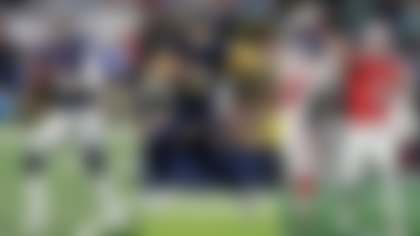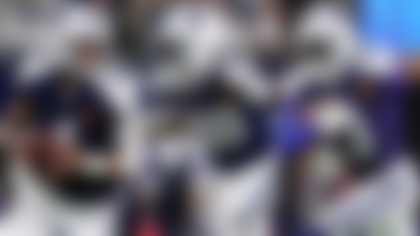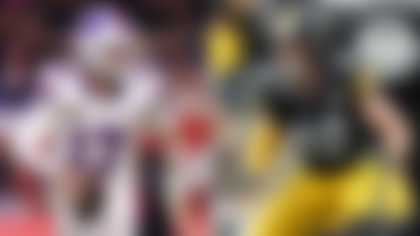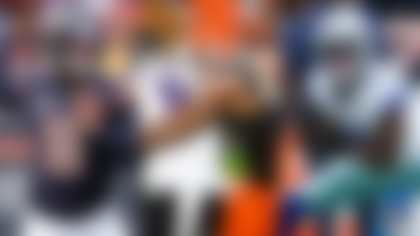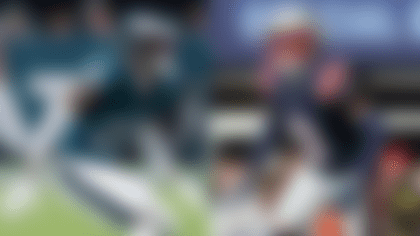Our Next Gen Stats team has been in the lab all offseason. Just as players and teams tirelessly train and strategize for the future, our team of research analysts and engineers spend every offseason striving to improve how we operate at the intersection of data science, football and AI. The results show up throughout the regular season and playoffs on broadcasts, NFL PRO, in our editorial coverage and in front offices across the league. Just as we've shared in recent years, here's what's new for 2025.
Coverage Responsibility
Since the inception of Next Gen Stats, we have relied on the basic logic of crediting a target in coverage to the closest defender to the receiver when the pass arrives. This method was directionally correct but was too rudimentary to serve as a robust measure of a defender's performance.
Enter Coverage Responsibility. We partnered with AWS to build a family of models to better quantify coverage roles and performance. These models all use the same transformer architecture to properly interpret spatial and temporal dynamics of every player, every tenth of a second. Armed with the output of each deep learning classification model, we now can tell in real time the assignment and matchup for every defender who dropped into coverage, as well as identifying the defender who was ultimately responsible for the targeted receiver.
This suite of models unlocks the ability to dive into marquee matchups between cornerbacks and receivers. We can examine who is getting safety help over the top and who is being left on an island in man coverage. With frame-level predictions, we also can see if a defender disguised his intent at the snap or ended up passing off a receiver as the offensive player ran through another defender's zone.
Quantifying coverage disguises
Many of the league's most dominant defenses, such as the Eagles under Vic Fangio and Vikings under Brian Flores, have been increasingly reliant on disguising their coverage patterns and safety shells to create chaos before the snap. The winners of the 2025 Big Data Bowl, Smit Bajaj and Vishakh Sandwar, featured a disguised coverage model in their submission, and we used their work as inspiration for our new classification model.
We productionized a pre-snap model that uses tracking data to estimate what a quarterback is seeing before the snap. We then compare that pre-snap label to our post-snap classification. If a defense shows split-safety zone and rotates to single-high man (or spins to Cover 0), we flag it as disguised. Now, we can quantify which defenses most frequently muddy the picture for QBs pre-snap and, in turn, which quarterbacks identify and beat those rotations.
Completion Probability 2.0
Completion Probability -- our first machine-learning model back in 2018 -- estimates the likelihood a pass is completed given on-field context. In 2025, we rebuilt and expanded it, adding key features to the model to more accurately express which throws and catches have a greater degree of difficulty.
In addition to traditional features like separation, depth and distance to the sideline, CP 2.0 introduces occlusion-aware separation, designating throws as more difficult when the defender is directly in the ball's path and actively contesting the catch point. As a result, we are now differentiating true tight windows that have an opponent blanketed on the target from scheme-driven layups where a defender's close proximity does not affect the pass catcher. We have also incorporated new quarterback-to-throw-path features that consider the passer's movement relative to the intended trajectory and window.
What else is new in 2025?
- Advanced motion types: Motion is a language, and we're expanding the dictionary. Beyond shifts, pre-snap motion and motion at snap, we now classify 19 advanced motion types — including jet, orbit, fly, glide and exit. League-wide motion usage has climbed significantly since 2018, reaching a new apex last season. These richer labels further contextualize how offenses are using these strategies to be effective.
- Chip blocks: Edge rushers tilt game plans. Our chip block model identifies when an eligible receiver meaningfully chips a rusher before releasing, improving our view of double teams and protection help.
- Expected possessions remaining: Game management is about time, score -- and opportunity. For any play, we now estimate the probability of there being anywhere from zero to more than 6 total possessions remaining in the game after the current possession. Coaches gain a more precise frame for fourth down, two-point conversions and clock decisions, while fans get a clearer sense of why a drive's tempo and choices shift in the final minutes.
- Prime Vision with Next Gen Stats: Prime Video's alternate feed returns for its fourth season with enhanced predictive features. The goal is the same: turn complex tracking data into real-time, watchable football insight.


